Step-by-step recipes: how to salt carrots for the winter
The most popular way to store your carrot crop is as a whole in your basement or cellar. But there are many options to diversify your table by preparing tasty and healthy preparations from a vegetable. For salting use already proven recipes or experiment and create your own.
The article will tell you how to salt carrots for the winter in jars according to original recipes.
The content of the article
Features of salting carrots

For salting, choose unsweetened vegetables - this is late varieties Autumn Queen, Karlena, Cardinal, Dolyanka. Mid-season roots are the most sweet, it can negatively affect the taste of the winter snack.
For pickling, choose medium-sized vegetables, whole, with no visible signs of damage or disease. Large specimens often have a thick shell and a dry core that will not absorb salt and produce the desired flavor.
Preparation of cans and ingredients
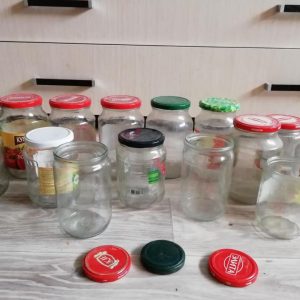
Salting jars must be intact, without chips, sagging and cracks. The lids are selected to the size of the cans so that they fit snugly and do not allow air to pass through. Sealing caps should be with a whole elastic band and no scratches on the surface, like colored screw caps.
All containers for blanks are sterilized, as well as lids. Sterilization can be carried out with steam, boiling jars, or baking them in the oven. The lids are steamed in a water bath or doused with boiling water just before the cans are rolled.
The ingredients are selected as fresh as possible. Root vegetables are cleaned and poured over with boiling water. All side roots and the upper part of the vegetable are cut off.
Important! If the top of the vegetable turns green, it is undesirable to use it in conservation.
Delicious salted carrot recipes
Harvesting salted carrots is not the most popular procedure among housewives. However, this method of conservation allows you to preserve the vegetable longer and diversify the winter table. We will learn how to pickle carrots to make it especially tasty.
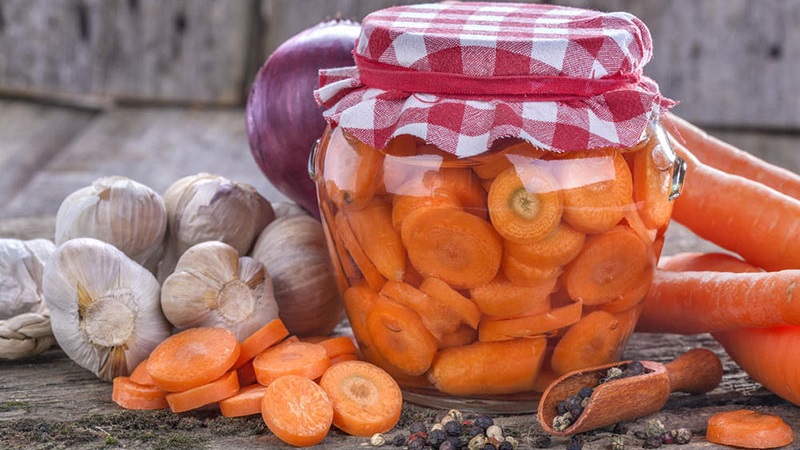
With salt
Ingredients:
- carrots - 5 kg;
- water - 1 l;
- salt - 600 g.
Cooking process:
- The water is boiled, salt is added and stirred until it is completely dissolved.
- The vegetable is tightly packed in containers with a wide neck, on which you can put a press.
- Small roots are left intact, larger ones are cut into two or more parts.
- The carrots are poured with cooled brine so that the liquid covers the root crops by 15 cm from above. Oppression is placed on top.
- The container is left at room temperature for 3-4 days, then the press is removed and placed in a dark cool place, covered with a lid.
Grated carrots without sterilization
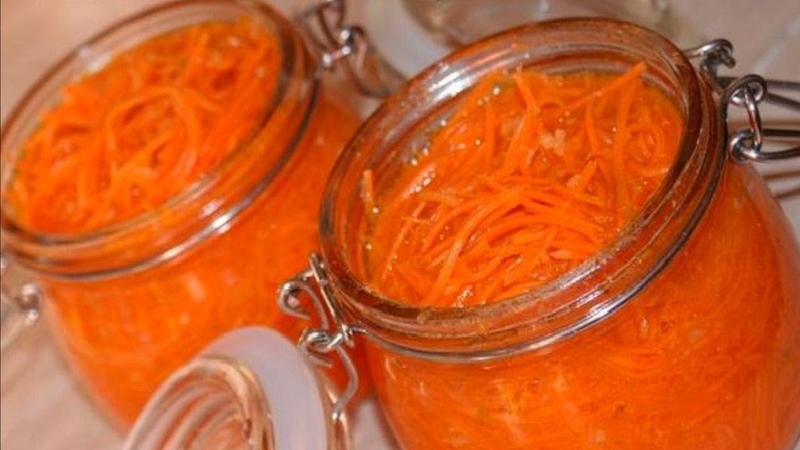
Ingredients:
- grated carrots - 1 kg;
- garlic - 2 heads;
- salt - 1 tbsp. l .;
- sugar - 3 tbsp. l .;
- 9% acetic acid - 100 ml;
- water - 2 l.
How to cook:
- Garlic is chopped in a blender or using a garlic press and added to grated carrots.
- The mixture is tamped tightly into jars, leaving 2-3 cm from the neck.
- The water is boiled and the mixture is poured into it for 15 minutes, then drained and boiled again, adding sugar, salt and vinegar.
- Boiling marinade cans are poured under the neck and rolled up.
Dry method without water
An original recipe in which no water is poured into the jars.
Ingredients:
- grated carrots - 5 parts;
- salt - 1 part.
Grated root vegetables and salt are mixed in a container so that the vegetable gives juice. The mixture is tamped into sterile jars to the top so that there is a minimum gap. Jars are rolled up with lids and stored in a dark, dry, cool room.
With horseradish
Horseradish enhances the crunchy qualities of carrots and gives the preparations an original taste.
Ingredients:
- grated carrots - 200 g;
- grated horseradish root - 200 g;
- paprika and white pepper - 1 tsp each;
- sugar - 1 tsp;
- salt - 2 tsp;
- vinegar 9% - 60 ml;
- water - 0.5 l.
Grated carrots and horseradish are mixed in a container and placed in a sterile container, filled with boiling water and allowed to stand for 10-15 minutes. Then spices, salt, sugar, and last of all vinegar are poured into the container. Stir the mixture thoroughly, close the lid tightly and allow to cool. Store jars in the refrigerator or cellar.
Salted carrots with herbs
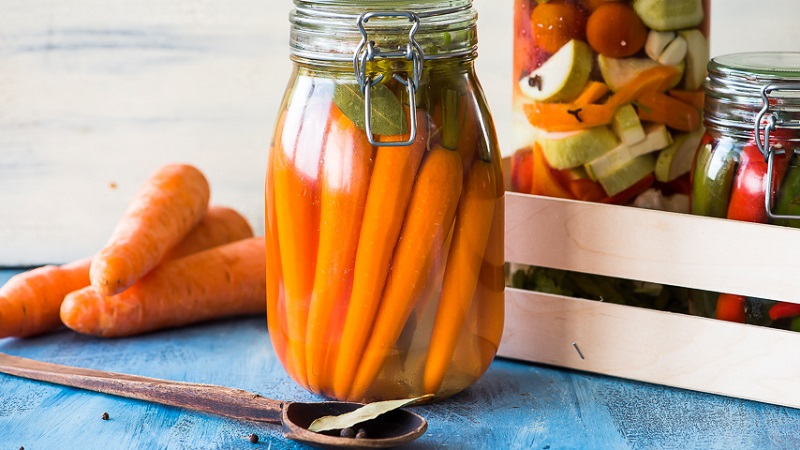
Ingredients:
- grated carrots - 1 kg;
- parsley greens - 50 g;
- dill - 50 g;
- salt - 5 tbsp. l.
Washed greens are chopped with a knife and mixed with grated root vegetable. The mixture is salted and allowed to stand for 10-15 minutes. Then they are tightly placed in sterile jars under the neck and rolled up.
Salted carrots with cumin
Ingredients:
- carrots - 1 kg;
- garlic - 1 head;
- mustard seeds and caraway seeds - 1 tsp each;
- salt to taste.
Cooking process:
- Carrots are peeled and grated on a coarse grater or on a Korean carrot grater.
- Garlic is peeled and passed through a garlic press or minced in a blender.
- Mix the garlic mass with carrots, add spices and salt.
- The mixture is tamped into sterile jars and rolled up with lids.
- Before being sent to the cellar or basement, the jars are stored in the refrigerator for 2-3 days.
How to store salted carrots in jars
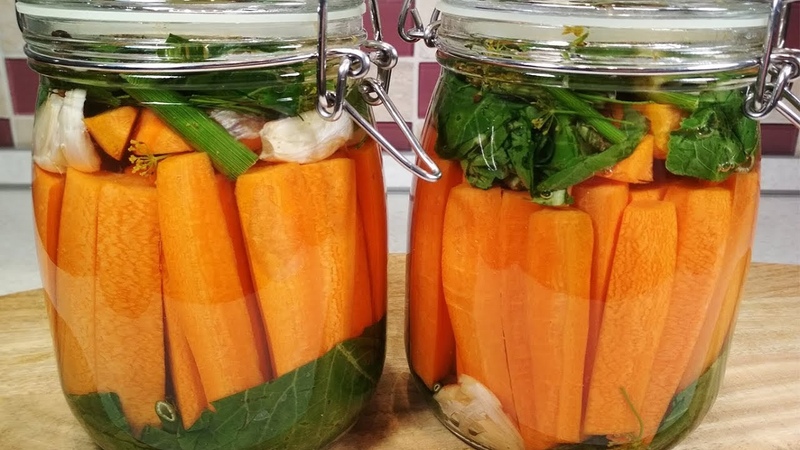
The shelf life of salted carrots is from several months to a year. However, it is worthwhile to regularly check the jars for the appearance of mold, darkening, turbidity and bubbling of the brine, swollen lids. Such cans are thrown away - using their contents in food is dangerous to health.
Banks are stored in the basement or cellar, in the refrigerator. Storage temperature should not exceed + 5 ... + 7 ° С.
Important! Jars of carrots in brine must not be frozen.
When storing in a cellar, it is important to ensure the desired temperature and level of ventilation. The walls of the cellar must be decontaminated from mold and other fungi. It is advisable to store jars not on an earthen floor, but on wooden pallets or shelves. The walls of the cans should not touch each other or touch the walls of the cellar.
Storage of cans on loggias and closed balconies is allowed, if the temperature in the room does not drop below 0 ° C. Banks are placed in boxes, lining them with paper or cotton cloth, so that they do not touch the walls with each other.
Attention! Long-term storage of pickles in the refrigerator is undesirable due to high humidity.
Conclusion
Salting carrots - convenient a way of storing vegetables in winter. If a vegetable is salted, it will retain its beneficial properties for much longer than fresh in the cellar. In winter, the use of such root vegetables shortens the preparation time for soups and stews.